Airpop is a company that has been making quite a splash in the mask industry recently. Not only were Icelandic Olympic team members seen sporting the mask in the opening ceremony, but the Airpop Active+ with a smart Halo sensor made waves at CES 2021.
I finally got a chance to try the Airpop range for myself to see what all of the buzz is about. At this point, I have been actively wearing Airpop masks for over 2 weeks and recording my thoughts. I tested the masks in day to day life while doing simple tasks such as supermarket shopping and also tried the masks while exercising. Today I want to share my thoughts on how the masks perform in both situations.
Airpop currently offers three models of their reusable mask – the Original, Active, and Active+. The company also offers a range of disposable masks. However, this article will be focusing on the reusable offerings from the company. Namely, the Original, Active, and Active+ with its Halo sensor.
As usual, there are a few things that need to be clarified before getting into this review. Please keep all of these points in mind as you read through the article.
- Every person has different facial dimensions and features. I will discuss the fit of this mask in detail, however, these are my experiences. I cannot say whether or not a mask will fit you.
- The filtration specifications apply to the filter media, not the mask itself. Masks must be fitted correctly and without leaks to achieve full protection. The filter must be fitted as instructed in the manual to prevent leakage.
I always welcome the thoughts and opinions of others. If you’ve purchased any of the masks from Airpop’s reusable lineup then please feel free to share your thoughts in the comments below. Did the mask fit? Did it not? This information is very valuable not only for me but also for future readers.
This post contains affiliate links. For more information, please refer to my affiliate disclaimer. I was sent a product for review, but the article is not sponsored. All opinions expressed in this post are my honest thoughts. I only recommend products that I genuinely believe in.
Information on this blog is for informational purposes only. Readers are encouraged to confirm the information herein with other sources. Furthermore, this information is not intended to replace medical advice from professionals. This website assumes no responsibility for the accuracy of the information, and information is subject to change without notice. Devices mentioned on this website are not medical devices and do not guarantee protection.
Purchase Airpop Masks. Save 20% with ‘Breathesafeair20’
Cost & Lifespan
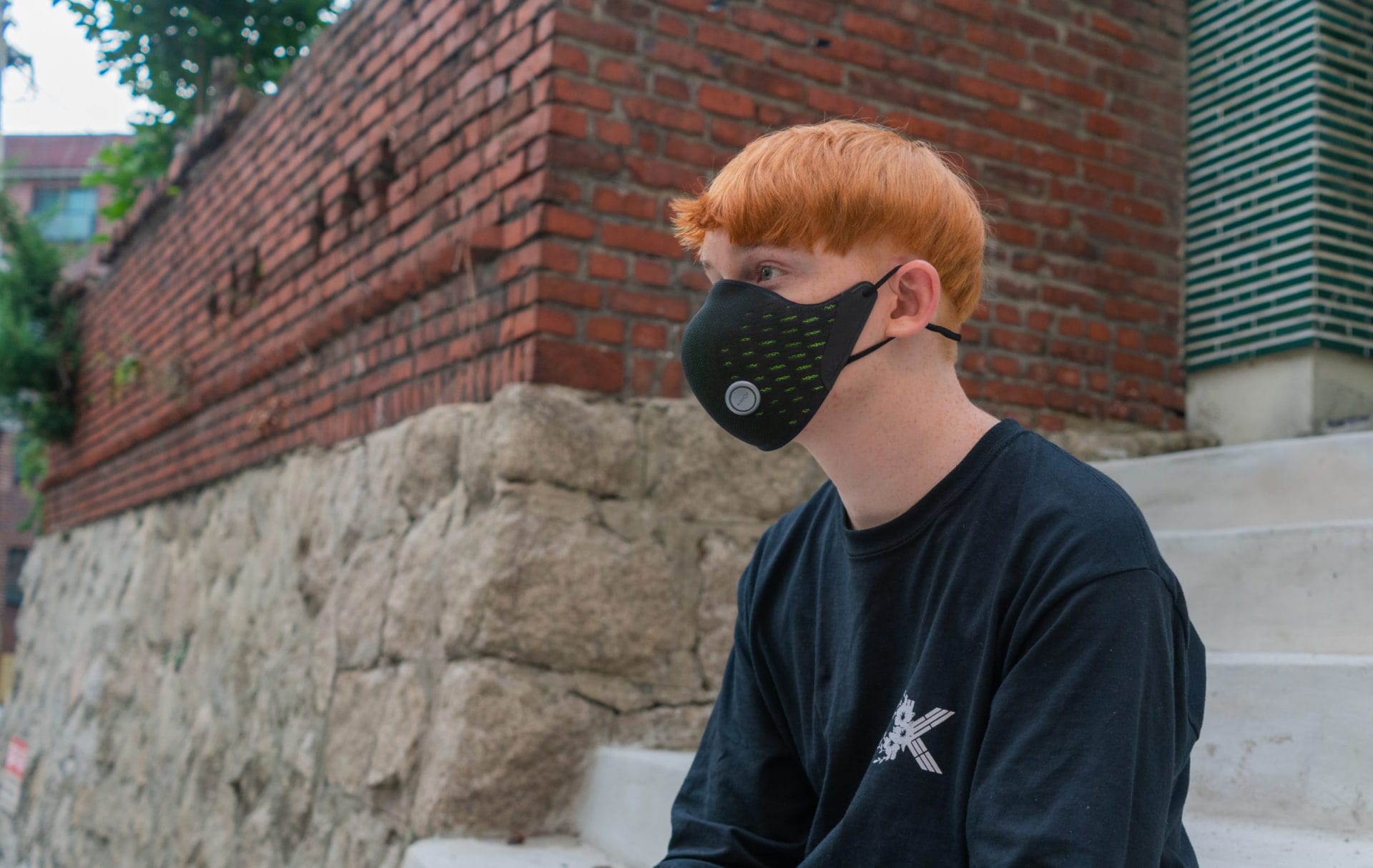
I wanted to get this out of the way as for many people it’s likely to be the elephant in the room. I would class the lineup from Airpop to be ‘premium’ masks. They use high-quality materials, have had a lot of thought go into their design, and use a more complex filter design. This also means they are more costly.
| Mask Model | Price |
|---|---|
| Original | $49 |
| Active | $59 |
| Active+ | $99 |
I saw a few reviews criticising the price of the Airpop masks – particularly the Airpop Active+. However, I actually don’t consider these prices to be as steep as others have made them out to be. Let me explain.
Are these masks pricey? Yes. But there are a few things to point out here. Firstly, the Active+ is not a mask aimed at the general user (I will discuss this in more detail later). Rather, the Original and Active are much better choices for the majority of people.
Secondly, when compared to other masks in the ‘premium’ segment of the mask market the prices are comparable. It’s also worth noting that each mask comes with 4 filters, which should last around 160 hours.
| Mask Type | Price |
|---|---|
| Airinum Urban Air Mask | $75 |
| Airinum Lite Mask | $50 |
| R-Pur Nano Lite | $139 |
| Purar Mask | $49 |
| AusAir Airflex | $69 (AUD) |
The most popular brands on the market (Cambridge Mask & Vogmask) cost $30-$35 for their Pro and VMC models respectively. Both of these masks use non-replaceable filters meaning that the full mask must be replaced every few months.
Of course, for an essential item, these prices are high. For many people, these prices will be too high to justify – that is fine. I just wanted to point out that when compared to many popular reusable mask options that are already out there, Airpop isn’t an exception in terms of price. This is something I think a lot of reviewers overlook.
If you are looking for a cheaper mask that uses replaceable filters consider checking out STYLESEAL and Craft Cadence Nanofiber Mask. While these masks lack some of the benefits of the masks above, they are more affordable and definitely worth consideration.
Replacement filters for all of the Airpop masks come in at a price of $20 for 4 filters. Each filter is rated to last around 40 hours. Therefore, after an initial investment in the mask, you are looking at approximately $20 for 160 hours of wear. This comes out as 13 cents (rounded up) per hour.
Purchase Airpop Masks. Save 20% with ‘Breathesafeair20’
Differences between Original, Active, and Active+

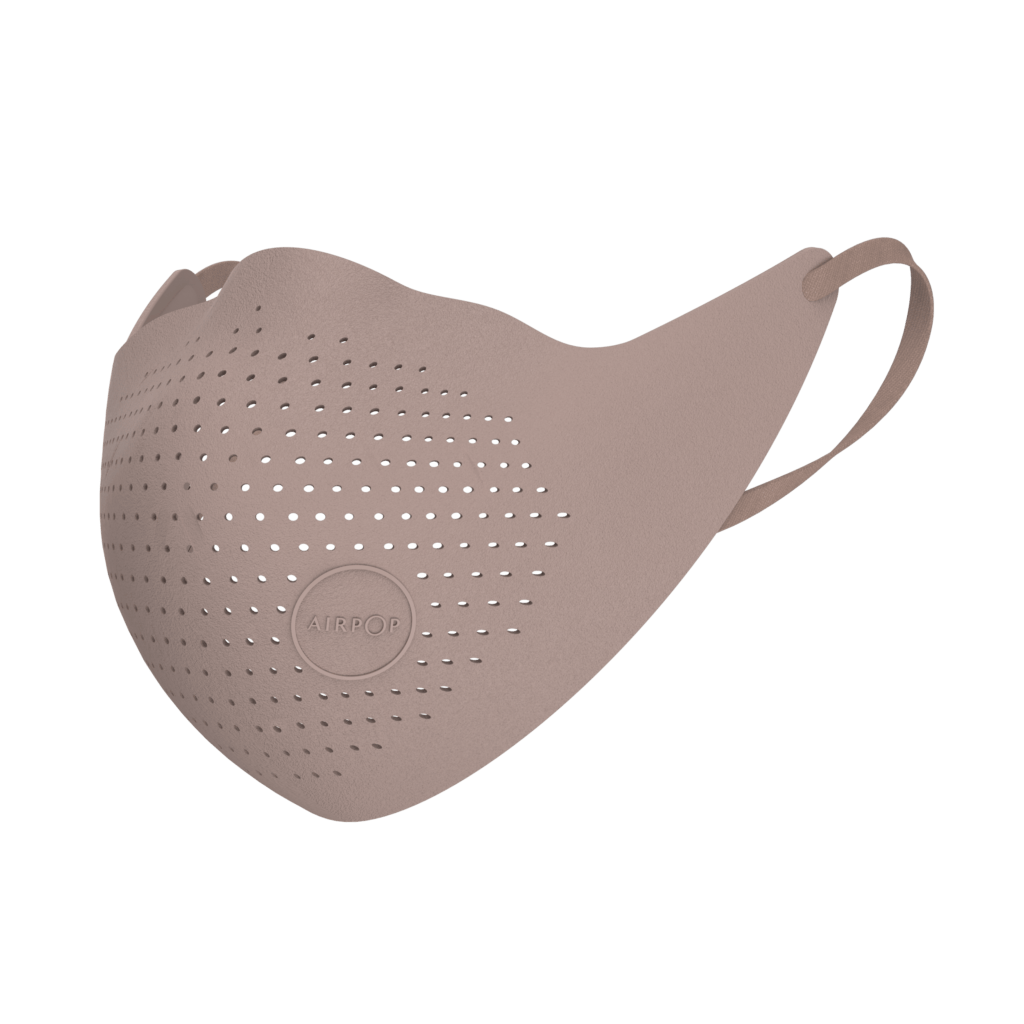
Active (left) vs Original (right)
Before getting into the details, I want to briefly cover the differences between the three reusable mask models that Airpop offers. At the time of writing, there are three models that are largely the same. The differences between the three are slight and the fit and filtration are similar between all models as they all use the same filter.
The difference between the Original and Active models is the material used in the mask shell. The Original takes a more standard approach, using a soft micro-fibre shell. This shell is dotted with small holes that allow air to pass through.
The Active and Active+ Instead use a proprietary 3D Air Knit fabric. This fabric took over a year of research to create and has been designed to allow for maximum airflow. This should make the Active models better tailored for anyone looking for a mask to exercise in.
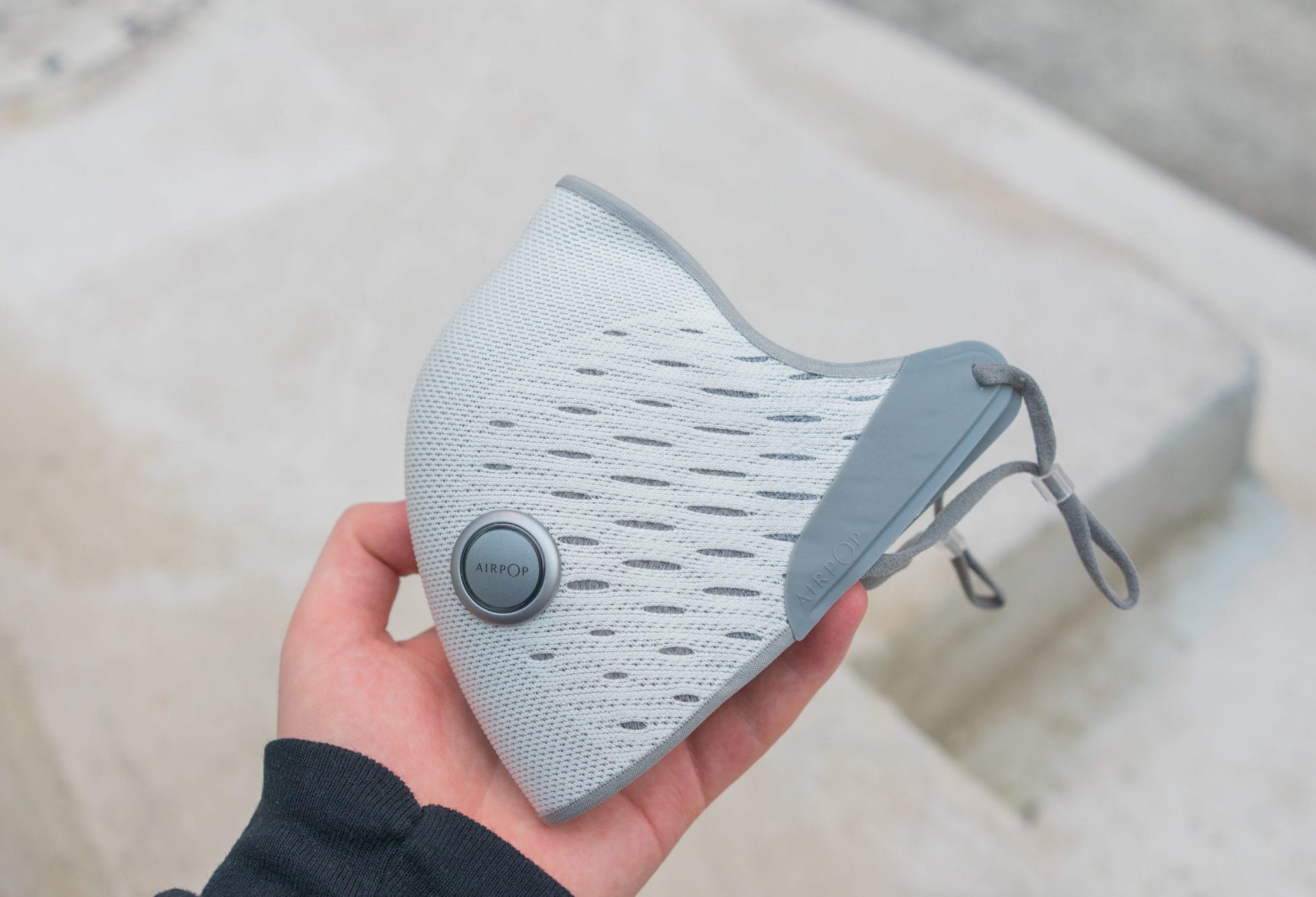
The Active+ Is the same as the Active except that it also comes with a built-in Halo sensor. This sensor can detect your breathing rate and can alert the user when a filter replacement is needed. The Halo sensor cannot be retrofitted on either the Original or Active masks.
For most people, I would recommend the Original or Active mask based on preference. The Active+ is significantly more expensive and I wouldn’t recommend it over the base models unless you feel like the filter lifespan tracking is essential for you. I will cover this in more detail further in the article.
Purchase Airpop Masks. Save 20% with ‘Breathesafeair20’
Filtration
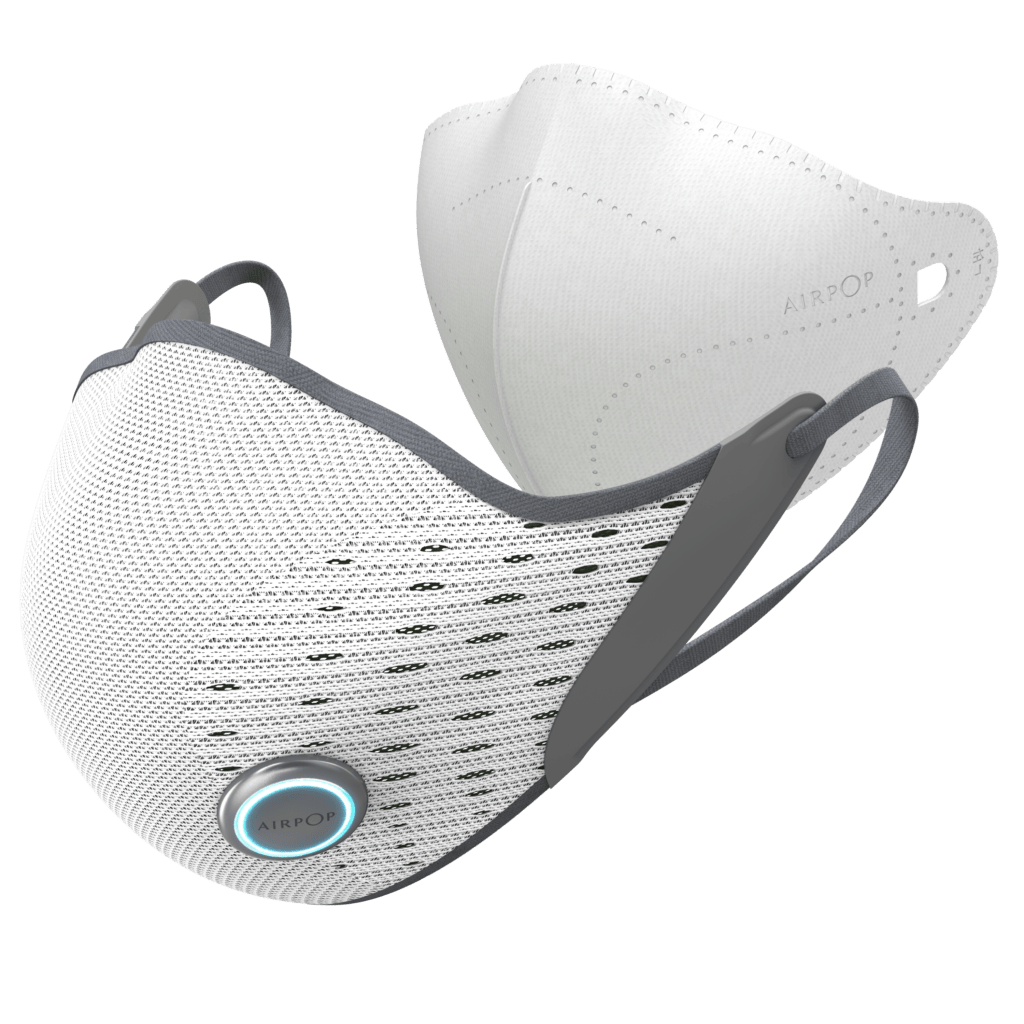
Filtration is key when it comes to identifying what a mask is capable of. It’s important to remember that the results achieved in lab tests are best-case when it comes to fit and leakage. If your mask is not sealed correctly, these filtration results will not apply as air will take the path of least resistance – in this case, through the gaps.
Therefore, while filtration efficacy is very important, equally as important is finding a mask that fits correctly with minimal leakage. I usually recommend wearing a better-fitting mask over one with higher filtration, simply because you can ensure that more air is actually passing through the filter. Of course, a well-fitting mask with high filtration is ideal.
Both the Active and Original variants of Airpop masks have undergone KN95 testing by a CNAS accredited laboratory in China. The KN95 standard is similar to the N95 standard from the U.S and the FFP2 standard from the EU, with a few minor differences. To learn more about the differences between mask rating systems please refer to this article.
Airpop has filtration certifications and results publicly available for their respective masks. From the help centre, you can navigate to the particular mask you are interested in and see all of the test results including those that I am referencing.

The KN95 adherence testing was carried out over 20 samples (mask + filter). Both the Original and Active masks consistently achieved > 97% particle filtration. Only one tested sample (out of 40) achieved lower than 97% filtration coming in at 95.81%. These results achieve the KN95 requirement of > 95% filtration of particles at the MPPS.
Filtration testing was also carried out by SGS. However, these results apply only to the filter media rather than to the mask with filter media inside. Carried out at 0.1μm, the filter media used in Airpop masks achieved a minimum filtration rate of 99.29% across the five tested samples.
Bacterial filtration efficacy was tested by Aitex, a textile research institute located in Spain. Five samples were tested for bacterial filtration and the mean filtration came out as 99.92% (on the Airpop Active). This puts Airpop masks among the best masks for bacterial filtration.
Further bacterial filtration testing was carried out on the filters by SGS. This testing was carried out according to the ASTM F2101-19 standard and used test particles with a mean size of 3.0μm. Filtration was consistently > 99.9% (the maximum recorded amount).
Overall, both the Airpop Original and Airpop Active provide high filtration for both particulate matter (such as PM2.5) and bacterial particles. Testing has been carried out by a range of different institutions and on both the filter media and mask.
Purchase Airpop Masks. Save 20% with ‘Breathesafeair20’
Fit

When seeing someone with an Airpop mask donned, it looks like the mask is hovering in front of their face rather than creating a seal. This is due to the fact that the seal is created by the filter, not the mask. A correctly fitting mask will look similar to the above image.
Similar to Airinum and AusAir, Airpop masks have a more complex filter that isn’t just filter media, rather some of the fitting mechanisms are actually built into the filter. Unlike Airinum and AusAir though, Airpop doesn’t just have a foam nosepiece on the filter – it actually has a full silicone seal.
This is why you will see images where the mask looks like it isn’t actually fitted correctly. The mask shell is only there to make sure that the filter is in place and stays there – the filter itself creates the seal.
So how does this silicone-seal filter work? From my experience, quite well but not perfectly. After pulling the ear loops quite tight (although not uncomfortably so), I was able to fully seal the area around my chin and to almost fully seal the bridge of my nose.

I found it difficult to initially adjust the mask. When I first got the mask I was concerned that the single size was simply the wrong size for me. Since the filter is somewhat independent of the mask (it attaches only on the left and right, and can move vertically) it was very different to fit when compared to other masks.
This isn’t necessarily a bad thing, but there was definitely a learning curve when it came to fitting the Airpop Active mask. Here are the steps that I took to achieve the best fit:
- Position the silicone nosepiece level with the bottom of your eyes. Ensure that the lower silicone sits just above your chin and creates a seal.
- Adjust the ear loops until the majority of leaks are removed.
- If there are still leaks around the bridge of your nose, adjust the earloops so that the bead is below your ears (rather than behind). This will draw the top of the mask more taught while not tightening the bottom.
After doing these steps I was able to achieve a fit that has minimal leaks. I was actually very happy with the fit after these adjustments and the Airpop Active is one of the best sealing masks that I have tried. I would attribute this to the fact that the silicone is a much better fitting mechanism than the more commonly used foam.
While the mask fits me well, I can foresee the silicone causing issues for some people. It’s less adjustable than nose foam and people with a higher nose ridge may have difficulty creating a seal. I haven’t been able to test this, but I can see it being a potential issue.
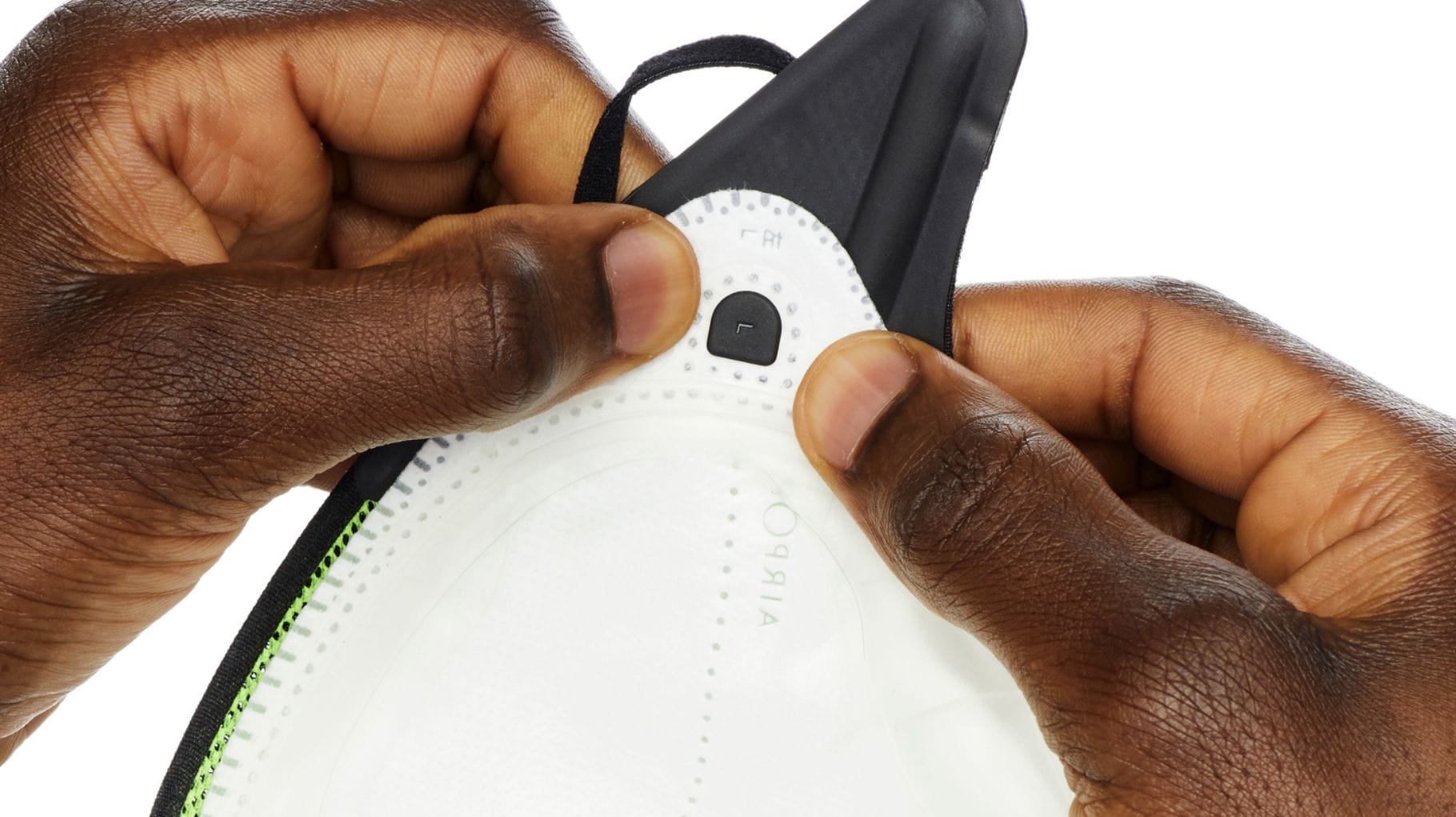
The filter attaches using two knobs on the left and right of the mask.
The system isn’t perfect, however, and I found that adjusting the mask on the go is quite finicky. Generally, adjusting a mask is quite easy and requires just a few seconds. However, since the filter creates the seal and it has some vertical leeway within the mask, it can be difficult to re-seal the mask if the seal breaks when you’re out.
This wasn’t a deal-breaker for me, but I did find that when I was active (in my case, when I went skateboarding) I would have to stop at times to readjust the mask. Sometimes I would spend 30 seconds trying to recreate the seal that I had when I initially donned the mask.
Purchase Airpop Masks. Save 20% with ‘Breathesafeair20’
Comfort

While fit and filtration are vital to ensuring that a mask is protective, these factors don’t matter if the mask is too uncomfortable to actually wear. Overall, I found that both the Airpop Active and Original are comfortable enough for me to reach for them when I leave the house. I do have some thoughts to share though.
Firstly, the mask is breathable. While it doesn’t have the best breathability that I’ve experienced (that goes to single-filter nanofibre masks like Bloo Mask and Happy Masks), the breathability is better than most replaceable filter masks that I’ve experienced.
This is especially true on the Active and Active+ as they make use of a mesh-like material on the surface of the mask. This allows for a lot of airflow and explains the biggest difference between the Original and Active variants as well as how the Active got its name.
While the Original does provide slightly more breathing resistance, I found the differences in breathability to be very minor. Honestly, I had difficulty differentiating between the masks when I was wearing them. This is a good thing though, as the breathing resistance on both models is low.
All Airpop models use earloops and longtime readers will know that I am not a fan of earloops. While they are the most convenient fitting method they are far from the most comfortable. Nearly all earloop masks cause pain behind the ears after a few hours of wear.
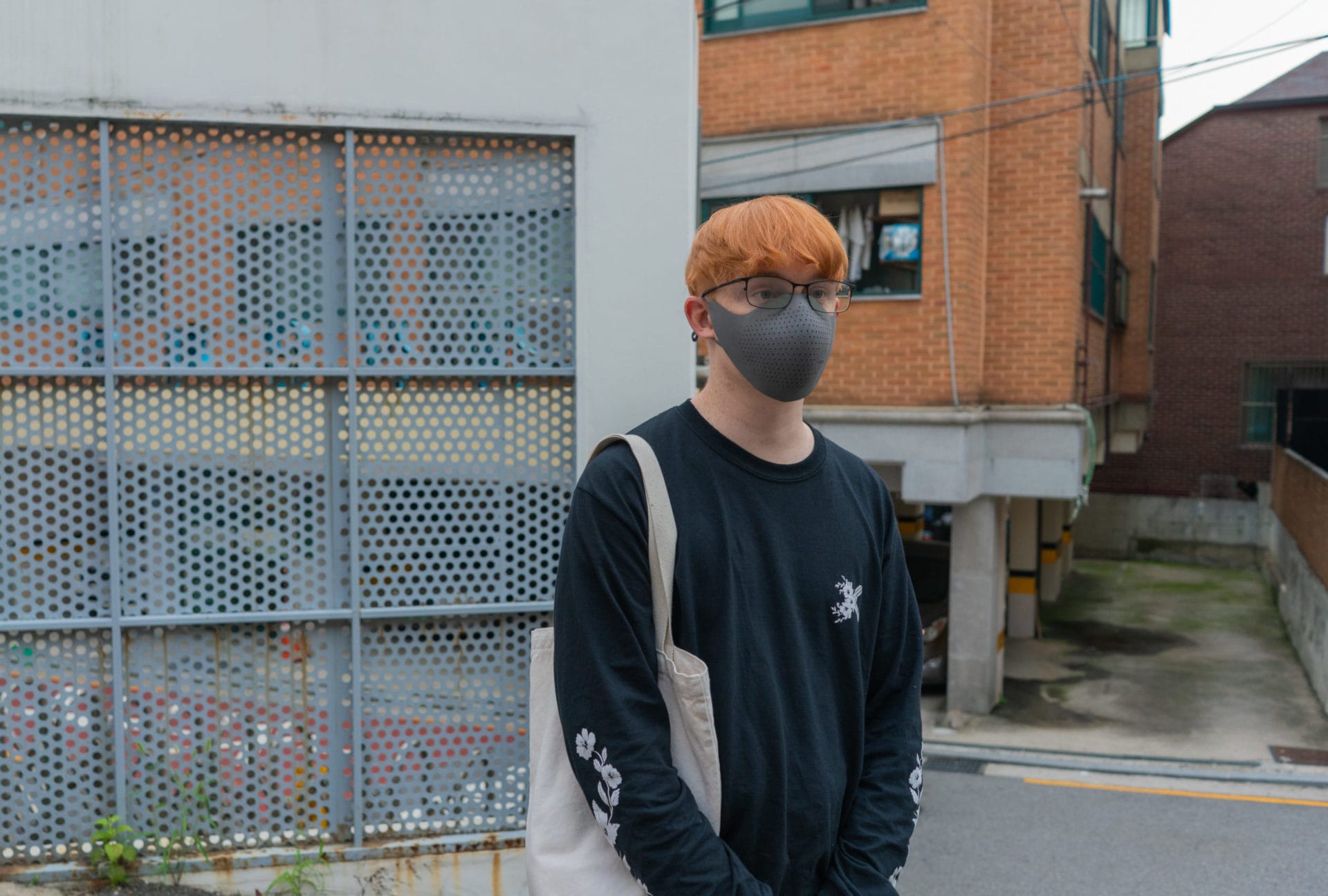
Despite wearing the mask quite tightly, I didn’t find the earloops to cause much pain. I’m not sure how this occurred because the straps aren’t exceptionally large or soft, however, I found the earloops to be comfortable even after wearing the mask for a couple of hours.
Since the mask uses silicone to create a seal, your face will be in contact with the silicone. After taking off the mask I did have marks imprinted on my face. These didn’t cause me any discomfort, but my face would remain red for 15 or 20 minutes after removing the mask.
I have very sensitive skin, and I did notice some minor irritation from the plastic. While this was not a big issue and it didn’t prevent me from wearing the mask it is worth noting. I worked the masks during summer in Seoul (33+ degrees Celsius) and this could have potentially been something caused by the heat.
The materials used in the mask have been tested for safety by SGS and have been certified as skin-safe. Airpop also abides by California Proposition 65 ensuring that none of the toxic materials defined by the proposition are present in the mask.
Filter collapse does occur, but it is not as serious as it is with other masks. I did find that when breathing in the filter would also be drawn in, at times touching my lips. I didn’t find this to be a big inconvenience as the filter never seriously interfered with my breathing.
Overall I found the Airpop Active and Airpop Original masks to be quite comfortable compared to other replaceable filter masks. The breathability is good and there is only minor filter collapse. I do prefer to wear the mask with a headband attachment, but the earloops are also comfortable enough for daily wear.
One last thing to note is that the Airpop Original has a far stronger smell than the active. This may bother some people as the ‘microfibre’ smell is quite strong. While this smell will disappear over time, the active has no such issues.
Purchase Airpop Masks. Save 20% with ‘Breathesafeair20’
Smart sensor – Do You Need it?
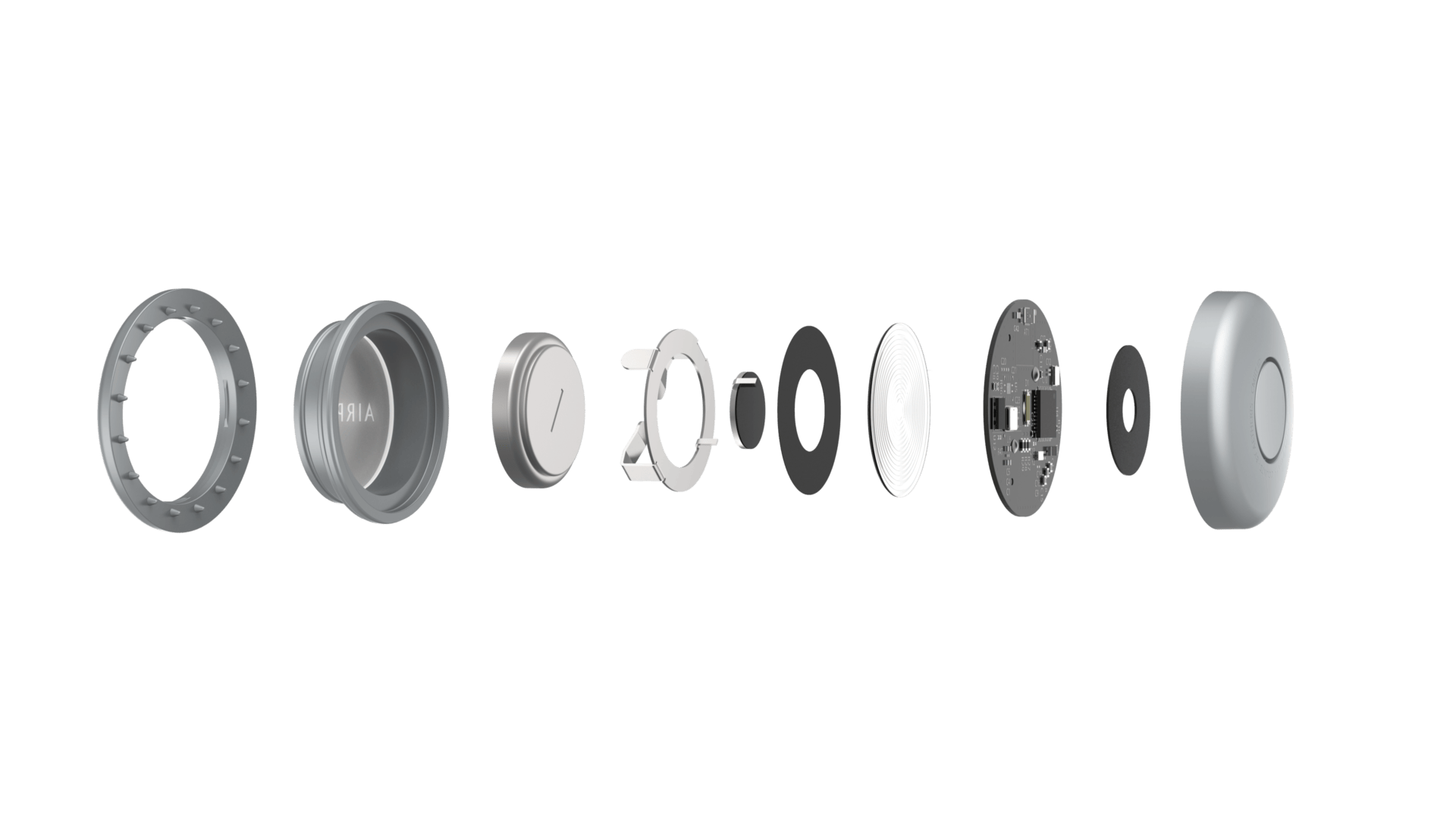
The most interesting mask in the Airpop series is undoubtedly the Active+. This mask uses a Halo sensor to detect the breathing rate of the wearer. This is an interesting addition because it allows the device to judge how much protection the wearer is receiving and when the filter needs replacing.
Before going any further, I want to mention that the Active+ is not a mask meant for the general consumer. While some users will find the sensor useful, this is an early iteration of the technology that is likely to have implications in other industries in the future.
With that being said, I’m sure there will be some people out there who are interested in the Active+ (I definitely was!). The only difference between the Active and Active+ is the addition of the Halo sensor. Therefore, the fit, comfort, and filtration are all the same.
The Halo sensor has two main purposes from my testing. The first is to let the user know when the filter needs replacing, and the second is to identify how much protection the user is receiving. While the second feature is cool to look at, I believe the biggest benefit is the first feature.
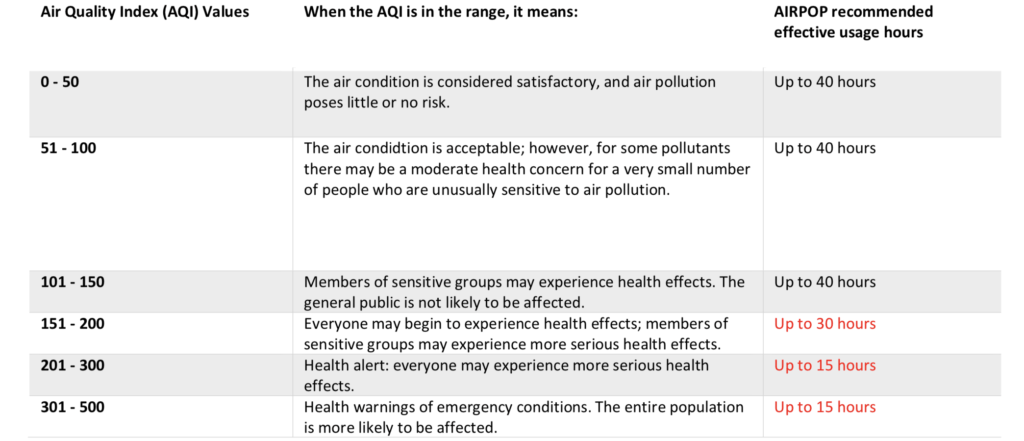
Suggested filter lifespan as tested by Aetheris.
All filters have a maximum lifespan, and usually, this is measured in hours. However, figuring out when a filter needs to be replaced is often a guessing game. Unless you keep a precise log recording how long you are outside each day, it’s very hard to accurately identify when a replacement is needed. On top of this, filters have differing lifespans depending on AQI (as shown above).
The app requires GPS permissions in order to be fully utilised. This is because the app tracks where you go in order to monitor local air quality (which will impact filter lifespan and allows the app to estimate how much protection you are receiving).
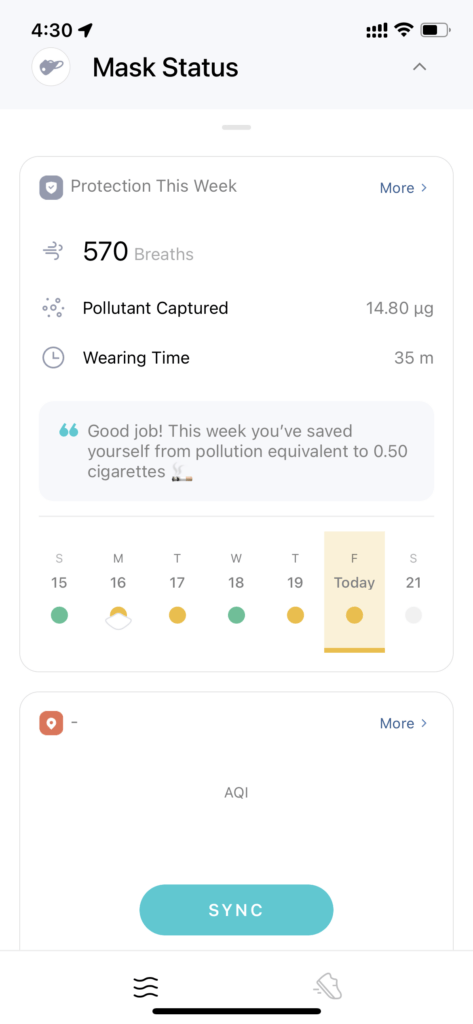
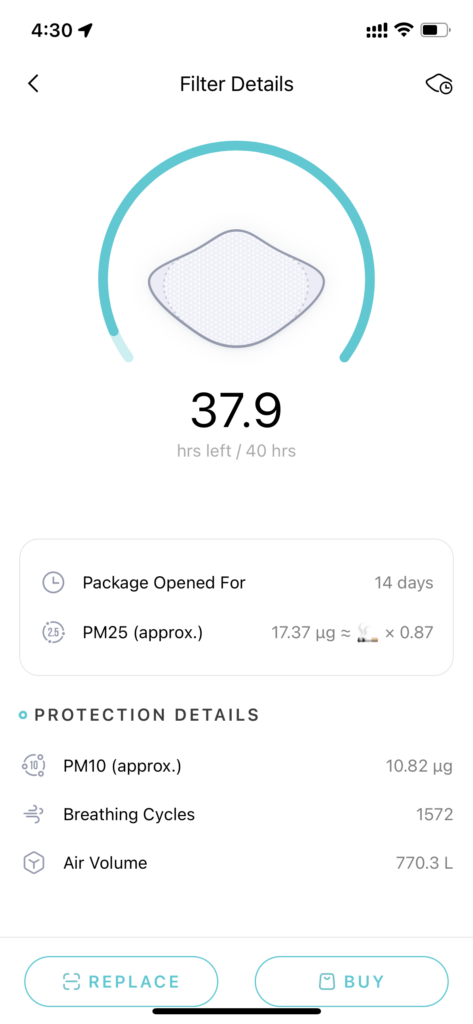
I tried the app on IOS 15 (iPhone 12) and found it to work, but to also be frustrating at times. Initially, when I connected to the Active+ I was notified that an update was available. However, until today I have not been able to proceed with the update because the Bluetooth connection drops mid-update every time. On top of this, the AQI graph often won’t load (as seen in the image above).
What’s important to note is that the mask won’t actively sync with the app (presumably to save battery life on the mask, which is powered by a CR1632 battery). This is not a big deal, as syncing takes only a couple of seconds and worked well for me. This will send all of the saved data to your smart device and allow you to see how breaths you’ve taken, filter lifespan, pollution particles caught, and more.


The app also allows you to change the colour of the RGB light on the Halo sensor – you can also turn the light off altogether. Another useful function is that the app allows you to scan QR code’s included with every filter to check for authenticity. I’ve seen this implemented more and more recently, and as mask scams become more common it can be a useful feature to have.
I have been told that the app and Halo sensor are areas that Airpop is focusing on. The app still has some issues that need to be ironed out, and the Halo sensor is the first iteration of an interesting concept. I enjoyed using the Halo sensor, but it’s hard for me to recommend the Active+ Over the standard Halo mask for the typical user.
I am excited about the future of the Halo sensor. In the past, electronic masks have been large – often bordering on unwieldy. Airpop is the first company that I have seen successful adopt electronics into a mask that… Well, actually looks like a mask. It will be interesting to see how this technology is built upon and improved.
Purchase Airpop Masks. Save 20% with ‘Breathesafeair20’
Conclusion
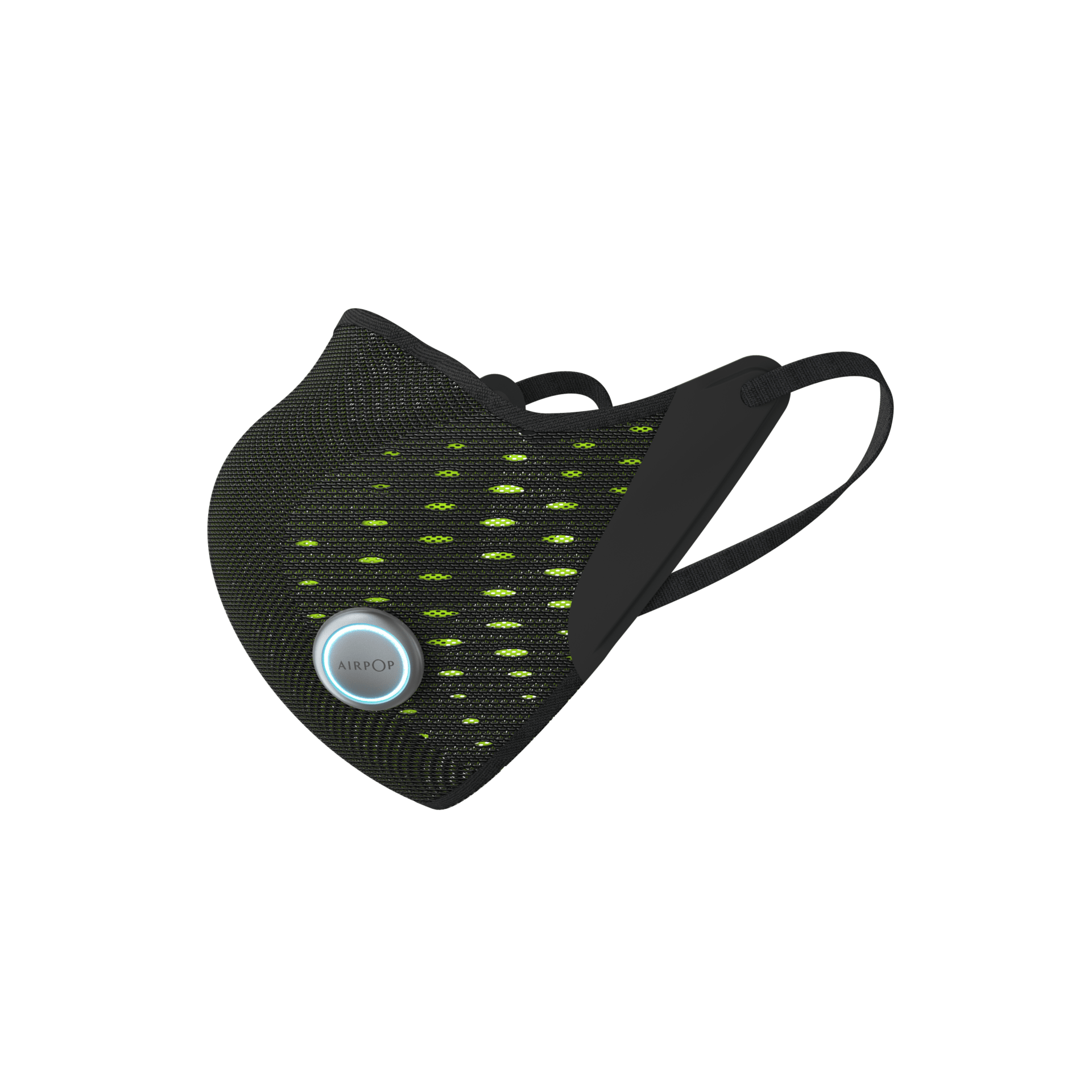
Out of the three Airpop models, the one that I would recommend for most people would be the Active. I found that it was easier to breathe through than the Original and it also smelt better than the microfibre used in the Airpop Original. With that being said, I actually prefer the look of the microfibre mask and the smell is something that will disappear over time.
When it comes to the Active+, most people will not see a significant advantage over the basic models. I had a great time using the Active+ and it was nice to know when each filter needed replacing. With that being said, the app needs some work to make it work more consistently and if you keep track of when you change filters such a function may not be needed.
Otherwise, all Airpop models feature similar strengths. The silicone on the filter creates a strong seal once the mask is adjusted correctly. I found this seal to be significantly better than most cloth masks and more akin to a plastic/silicone mask like Gill Mask. This is a big advantage of Airpop.
The mask has some filter collapsed but this was not a big issue from my experience. The large size of the mask also gives ample room for speaking and provides a large surface area which results in good breathability.
As with all masks, Airpop is not perfect. The can be hard to fit initially and I imagine that some people with a higher nose ridge may have difficulty getting a solid seal. On top of this, while the silicone does provide a good seal, it can leave marks on your skin and I did experience some minor irritation from it.
During the period that I tried Airpop it was very hot in Seoul (33-37 degrees Celsius) and I found that the mask was very hot and humid inside. However, this is an issue with nearly every mask and I don’t fault Airpop for this – it is worth noting though.
In conclusion, Airpop has made a strong lineup of masks. If you are looking for a more premium mask I would recommend considering Airpop. In particular, the Airpop Active is the mask that I would suggest for the majority of people.
If you’re still wondering which mask to purchase, please consider checking out my article on the best reusable masks.
Purchase Airpop Masks. Save 20% with ‘Breathesafeair20’
Airpop FAQ
Does Airpop Have Lab Testing?
Yes. Airpop has undergone KN95 testing by a CNAS accredited laboratory in China. On top of this, further particle filtration testing has been carried out by SGS and bacterial filtration testing by Aitex. Active Filters have also been tested by Intertek N.Y. according to the most current ASTM F3502-21 standards. In lab testing, AirPop Masks demonstrated >97% particle filtration efficiency and <0.8 mm H2O inhalation breathing resistance.
Does Airpop Have an Official Certification?
Currently, Airpop does not have a KN95 certification, but it does pass the requirements. Airpop also has Intertek accredited ASTM F3502-21 and meets workplace performance plus criteria
What Is the Difference Between the Original and Active Mask?
The Airpop Original uses a microfibre outer layer whereas the Active mask uses a proprietary 3D air knit fabric. This makes the Active easier to breathe through.
What Is the Halo Smart Sensor?
The Halo smart sensor in the Active+ monitors your breathing rate. Combined with the AQI reading this can be used to judge when each filter needs replacing via the Airpop app.
Are Airpop Masks Reusable?
Yes! Each filter for Airpop masks can be reused for up to 40 hours (depending on the AQI).
What Are Some Airpop Mask Alternatives?
Some alternatives to Airpop that might be worth considering are the Airinum Urban Air 2.0, and AusAir Airflex.
Have Questions or Comments?
Join the discussion on the BreatheSafeAir Community Forum. Ask any questions you have about air quality or adjacent topics and get quick answers!
AirPop Active Mask

AirPop sells three reusable masks - the Original, Active, and Active+. These reusable masks are unique as they offer a stylish approach to masking while still providing a high level of filtration and a good fit.
3.5
Pros
- Stylish looking
- High filtration
- Silicon seal provides a secure fit
- Adjustable earloops
- Reusable and replaceable filter
- Masks are washable
Cons
- Masks won't fit everyone
- Earloops provide a worse fit than headbands
- Pricey (especially the Active+)
- Halo 'Smart' Sensor and app need work